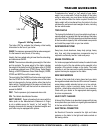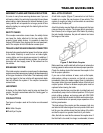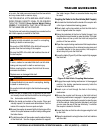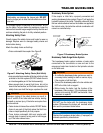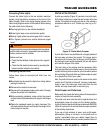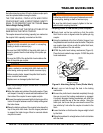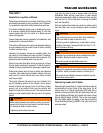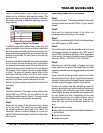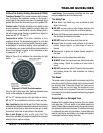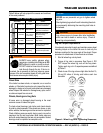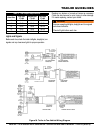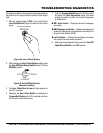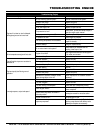
DCA70SSJU4i
TRAILER GUIDELINES
Use the information contained in this section to make tire
safety a regular part of your vehicle maintenance routine.
Recognize that the time you spend is minimal compared
with the inconvenience and safety consequences of a fl at
tire or other tire failure.
Federal law requires tire manufacturers to place standardized
information on the sidewall of all tires (Figure J). This
information identifies and describes the fundamental
characteristics of the tire and also provides a tire
identifi cation number for safety standard certifi cation and
in case of a recall.
Figure J. Standard Tire Sidewall Information
P
: The “P” indicates the tire is for passenger vehicles.
Next number
: This three-digit number gives the width in
millimeters of the tire from sidewall edge to sidewall edge.
In general, the larger the number, the wider the tire.
Next number
: This two-digit number, known as the aspect
ratio, gives the tire’s ratio of height to width. Numbers of
70 or lower indicate a short sidewall for improved steering
response and better overall handling on dry pavement.
P
: The “R” stands for radial. Radial ply construction of tires
has been the industry standard for the past 20 years.
Next number
: This two-digit number is the wheel or rim
diameter in inches. If you change your wheel size, you
will have to purchase new tires to match the new wheel
diameter.
Next number
: This two- or three-digit number is the tire’s
load index. It is a measurement of how much weight each
tire can support. You may fi nd this information in your
owner’s manual. If not, contact a local tire dealer.
Note:
You may not fi nd this information on all tires because it is
not required by law.
: The “M+S” or “M/S” indicates that the tire has
some mud and snow capability. Most radial tires have
these markings; hence, they have some mud and snow
capability.
Speed Rating
: The speed rating denotes the speed at
which a tire is designed to be driven for extended periods
of time. The ratings range from 99 miles per hour (mph) to
186 mph. These ratings are listed in Table A. Note: You may
not fi nd this information on all tires because it is not required
by law.
: This begins with the
letters “DOT” and indicates that the tire meets all federal
standards. The next two numbers or letters are the plant
code where it was manufactured, and the last four numbers
represent the week and year the tire was built. For example,
the numbers 3197 means the 31st week of 1997. The other
numbers are marketing codes used at the manufacturer’s
discretion. This information is used to contact consumers
if a tire defect requires a recall.
: The number of
plies indicates the number of layers of rubber-coated fabric
in the tire. In general, the greater the number of plies, the
more weight a tire can support. Tire manufacturers also
must indicate the materials in the tire, which include steel,
nylon, polyester, and others.
: This number indicates the
maximum load in kilograms and pounds that can be carried
by the tire.
: This number
is the greatest amount of air pressure that should ever be
put in the tire under normal driving conditions.
Speed Rating
Speed Rating
Q 99 mph
R 106 mph
S 112 mph
T 118 mph
U 124 mph
H 130 mph
V 149 mph
W 168* mph
Y 186* mph



